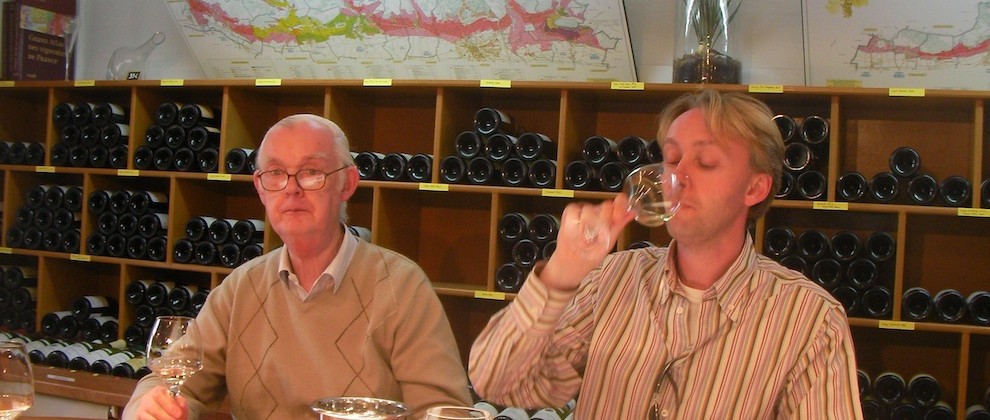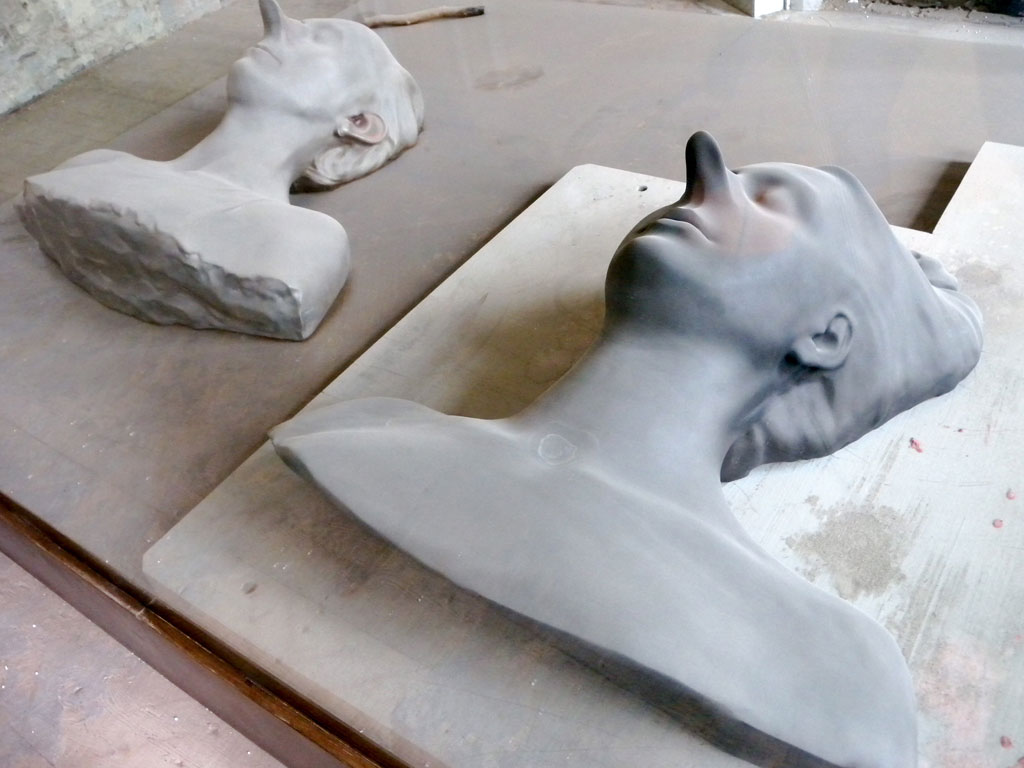
This first is blended with blackcurrants.
The second has hints of honey and balsamic vinegar. The third packs a punch of spiced gingerbread.
We tuck in as Marc Desarmenien, General Manager of Fallot, explains the favourable combination of terroir, natural resources and climate.
We’re in Burgundy, the Pinot Noir and Chardonnay-producing heart of France’s wine trade, but we’re not talking vin with Monsieur Desarmenien. This tasting is dedicated to Burgundy’s other world-beater: mustard.
“As a moutardier, I’m looking for a rich-yellow hue and a strong, not spicy, taste.”
“A winemaker seeks subtlety but I’m more concerned with the combination of flavours,” explains Marc, offering more canapés to dip into the coloured pools of mustard daubed artistically on the plate like Picasso’s palette.
Marc’s grandfather founded the Fallot mustard mill in 1928 and it now produces some 85,000 tones of mustard per year. It is the only one left of 30 mills from Burgundy’s mustard-producing salad days.
But Marc is sanguine. The honey and balsamic vinegar blend recently won them a contract with Waitrose.
“Mustard has a 3,000-year history from China to Burgundy,” explains Marc, taking us on a guided tour, first an interactive romp through the history of mustard in France, then a high-tech factory visit with graphics explaining the science of preparing the wild mustard seed.
“Mustard is mystical and medicinal. It was even used in Britain in Victorian times as a tonic.”
Weekend escape
Mustard, wine and curative properties are to feature heavily on the agenda for the weekend.
I’m here with my 71-year-old father to celebrate both his birthday and 100 years of Father’s Day in the UK this June.
France caught up with the event in 1952. It’s over 15 years since dad last time dad took a holiday and it was 1947 when he was last in Burgundy, still wearing short trousers.
But why Burgundy for a dad-doting weekend? Simple.
Dukes, vineyards, museums, gingerbread, churches and lashings of mustard, plus five hours from St Pancras by Eurostar and TGV with a short metro hop across Paris in between.
No queues, no hassle and definitely no volcanic ash-inspired delays. It’s perfect for father-son bonding trip.
Room with a view
We start our visit in the wine town of Beaune, indulging dad’s interest in heritage with a guided tour in English of the 15th-century Hotel-Dieu.
Built by Nicolas Rolin, one of the Dukes of Burgundy, as a perceived way to fast track a place in Heaven, the lavishly designed hospice has been a place of healing since the Middle Ages.
Part of the complex is still a working retirement home today. Dad is already eyeing up one of the rooms with shuttered windows set among the flower-strewn garden.
Less appealing, however, is collection of ceramic jars of traditional cures in the old pharmacy. That’s a paste of herbs, snake skin and opium, a dose of which was traditionally given to every new arrival.
After a simple but satisfying lunch of ham terrine, beef tongue and crème caramel at a homely local bistro, plus the obligatory glass of something fruity and fragrant, we make our way through the historic, cobbled streets of Beaune to Sensation Vin, a wine cellar-cum-classroom.
Tasting session
The owners left the wine trade some four years ago to set up a cellar where anyone with an interest in Burgundy wine, but a low threshold of knowledge, can call in for a one-hour crash course in wine appreciation. It includes a blind tasting of six local wines. Co-owner Celine Dandelot explains:
“People are afraid of stuffy tastings at local wine cellars. It can be intimidating, so we try to demystify the process.”
Dad and I take our seats at a lightbox-style tasting table and watch the introductory briefing on the wall-mounted TV as Celine uncorks the bottles.
The five wine-producing regions of Burgundy, we learn, produce 200m bottles of wine per year, one third red, two thirds white. These are split into four categories: grand cru, premier cru, village and region.
“We simply look at colour, smell and taste, repeating the same three tests for each of the six wines,” explains Celine. “You can tell the age of a wine form its colour and its aroma. By tasting, we identify its characteristics.”
Sure enough, after just a few minutes, we are plotting the wines on a Venn diagram, ranging from young wines with a floral nose and high acidity to mature wines with cooked-fruit aromas and higher levels of tannins.
Best of all, the relaxed, speak-your-mind ambiance takes the stiltedness out of the tasting.
A summer breeze is gently ruffling the sun-basking landscape as we head north to Dijon later that day, following the Route des Grands Crus that cuts a grape-growing swathe through the heart of the Cotes de Nuits slopes.
As we trundle along country lanes, regimented battalions of vines stand to attention. Isolated, stone worksheds spring out from the hillsides against a thousand-acre sky.
Plots of land, demarcated by weather-aged walls, are interspersed by proud stone crosses, keeping sentry duty by the roadside.
Lazy morning
After a hearty dinner and a good night’s sleep in the newly restyled fifth-floor rooms at Dijon’s Hotel La Cloche, we set out the next morning to explore the city, catching the free, city-circling shuttle bus to the stately main square, Place de la Liberation, with its pavement cafés and dancing fountains.
The morning is spent leisurely, weaving through historic passageways, marveling at the produce for sale at the traditional covered market and stopping for an espresso boost and some people watching.
There’s time for souvenir hunting too: traditional Burgundy gingerbread biscuits from the Rose de Vergy patisserie and a dainty, ceramic mustard pot from Boutique Maille, Dijon’s celebrated shrine to mustard.
Dad has loved the good food and wine, the sense of heritage and gentle mooching around one of France’s most attractive regions, not to mention sampling his own body weight in mustard.
And I’ve enjoyed sharing it with him. We don’t need to wait until the next father’s day for another generation-spanning weekend away.
Besides, dads do a hard job us and they deserve their moments in the sun too.
* This article was first published in the Daily Mail in 2010.
* Liked this? Try also Is fatherhood really worth it?

